Kristine Hughes's Blog, page 156
March 11, 2011
Dinner with the Queen
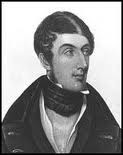 Charles Greville From the Greville Memoirs
Charles Greville From the Greville Memoirs
March 11th. (1838) — I dined yesterday at the Palace, much to my surprise, for I had no expectation of an invitation. There was a very numerous party:—the Hanoverian Minister Baron Miinchhausen, Lord and Lady Grey, the Chancellor, the Roseberys, Ossulston, Mahon, etc. We assembled in the round room next the gallery, and just before the dinner was ready the Queen entered with the Duchess of Kent, preceded by the Chamberlain, and followed by her six ladies. She shook hands with the women, and made a sweeping bow to the men, and directly went in to dinner, conducted by Miinchhausen, who sat next to her, and Lord Conyngham on the other side. The dinner was like any other great dinner. After the eating was over, the Queen's health was given by Cavendish, who sat at one end of the table, and everybody got up to drink it: a vile, vulgar custom, and, however proper it may be to drink her health elsewhere, it is bad taste to have it given by her own officer at her own table, which, in fact, is the only private table it is ever drunk at. However, this has been customary in the two last reigns. George III never dined but with his family, never had guests, or a dinner party.
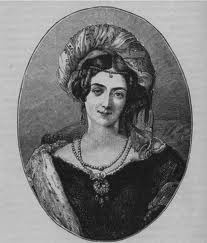 Queen Victoria's mother, the Duchess of Kent "The Queen sat for some time at table, talking away very merrily to her neighbours, and the men remained about a quarter of an hour after the ladies. When we went into the drawing-room, and huddled about the door in the sort of half-shy, half-awkward way people do, the Queen advanced to meet us, and spoke to everybody in succession, and if every body's 'palaver ' was as deeply interesting as mine, it would have been worth while to have had Gurney to take it down in short-hand. The words of kings and queens are precious, but it would be hardly fair to record a Royal after-dinner colloquy. . . . After a few insignificant questions and answers, —gracious smile and inclination of head on part of Queen, profound bow on mine, she turned again to Lord Grey. Directly after I was (to my satisfaction) deposited at the whist table to make up the Duchess of Kent's party, and all the rest of the company were arranged about a large round table (the Queen on the sofa by it), where they passed about an hour and a half in what was probably the smallest possible talk, interrupted and enlivened, however, by some songs which Lord Ossulston sang. We had plenty of instrumental music during and after dinner. To form an opinion or the slightest notion of her real character and capacity from such a formal affair as this, is manifestly impossible. Nobody expects from her any clever, amusing, or interesting talk, above all no stranger can expect it. She is very civil to everybody, and there is more of frankness, cordiality, and good-humour in her manner than of dignity. She looks and speaks cheerfully: there was nothing to criticise, nothing particularly to admire. The whole thing seemed to be dull, perhaps unavoidably so, but still so dull that it is a marvel how anybody can like such a life. This was an unusually large party, and therefore more than usually dull and formal; but it is much the same sort of thing every day."[image error]
Queen Victoria's mother, the Duchess of Kent "The Queen sat for some time at table, talking away very merrily to her neighbours, and the men remained about a quarter of an hour after the ladies. When we went into the drawing-room, and huddled about the door in the sort of half-shy, half-awkward way people do, the Queen advanced to meet us, and spoke to everybody in succession, and if every body's 'palaver ' was as deeply interesting as mine, it would have been worth while to have had Gurney to take it down in short-hand. The words of kings and queens are precious, but it would be hardly fair to record a Royal after-dinner colloquy. . . . After a few insignificant questions and answers, —gracious smile and inclination of head on part of Queen, profound bow on mine, she turned again to Lord Grey. Directly after I was (to my satisfaction) deposited at the whist table to make up the Duchess of Kent's party, and all the rest of the company were arranged about a large round table (the Queen on the sofa by it), where they passed about an hour and a half in what was probably the smallest possible talk, interrupted and enlivened, however, by some songs which Lord Ossulston sang. We had plenty of instrumental music during and after dinner. To form an opinion or the slightest notion of her real character and capacity from such a formal affair as this, is manifestly impossible. Nobody expects from her any clever, amusing, or interesting talk, above all no stranger can expect it. She is very civil to everybody, and there is more of frankness, cordiality, and good-humour in her manner than of dignity. She looks and speaks cheerfully: there was nothing to criticise, nothing particularly to admire. The whole thing seemed to be dull, perhaps unavoidably so, but still so dull that it is a marvel how anybody can like such a life. This was an unusually large party, and therefore more than usually dull and formal; but it is much the same sort of thing every day."[image error]
 Charles Greville From the Greville Memoirs
Charles Greville From the Greville MemoirsMarch 11th. (1838) — I dined yesterday at the Palace, much to my surprise, for I had no expectation of an invitation. There was a very numerous party:—the Hanoverian Minister Baron Miinchhausen, Lord and Lady Grey, the Chancellor, the Roseberys, Ossulston, Mahon, etc. We assembled in the round room next the gallery, and just before the dinner was ready the Queen entered with the Duchess of Kent, preceded by the Chamberlain, and followed by her six ladies. She shook hands with the women, and made a sweeping bow to the men, and directly went in to dinner, conducted by Miinchhausen, who sat next to her, and Lord Conyngham on the other side. The dinner was like any other great dinner. After the eating was over, the Queen's health was given by Cavendish, who sat at one end of the table, and everybody got up to drink it: a vile, vulgar custom, and, however proper it may be to drink her health elsewhere, it is bad taste to have it given by her own officer at her own table, which, in fact, is the only private table it is ever drunk at. However, this has been customary in the two last reigns. George III never dined but with his family, never had guests, or a dinner party.
 Queen Victoria's mother, the Duchess of Kent "The Queen sat for some time at table, talking away very merrily to her neighbours, and the men remained about a quarter of an hour after the ladies. When we went into the drawing-room, and huddled about the door in the sort of half-shy, half-awkward way people do, the Queen advanced to meet us, and spoke to everybody in succession, and if every body's 'palaver ' was as deeply interesting as mine, it would have been worth while to have had Gurney to take it down in short-hand. The words of kings and queens are precious, but it would be hardly fair to record a Royal after-dinner colloquy. . . . After a few insignificant questions and answers, —gracious smile and inclination of head on part of Queen, profound bow on mine, she turned again to Lord Grey. Directly after I was (to my satisfaction) deposited at the whist table to make up the Duchess of Kent's party, and all the rest of the company were arranged about a large round table (the Queen on the sofa by it), where they passed about an hour and a half in what was probably the smallest possible talk, interrupted and enlivened, however, by some songs which Lord Ossulston sang. We had plenty of instrumental music during and after dinner. To form an opinion or the slightest notion of her real character and capacity from such a formal affair as this, is manifestly impossible. Nobody expects from her any clever, amusing, or interesting talk, above all no stranger can expect it. She is very civil to everybody, and there is more of frankness, cordiality, and good-humour in her manner than of dignity. She looks and speaks cheerfully: there was nothing to criticise, nothing particularly to admire. The whole thing seemed to be dull, perhaps unavoidably so, but still so dull that it is a marvel how anybody can like such a life. This was an unusually large party, and therefore more than usually dull and formal; but it is much the same sort of thing every day."[image error]
Queen Victoria's mother, the Duchess of Kent "The Queen sat for some time at table, talking away very merrily to her neighbours, and the men remained about a quarter of an hour after the ladies. When we went into the drawing-room, and huddled about the door in the sort of half-shy, half-awkward way people do, the Queen advanced to meet us, and spoke to everybody in succession, and if every body's 'palaver ' was as deeply interesting as mine, it would have been worth while to have had Gurney to take it down in short-hand. The words of kings and queens are precious, but it would be hardly fair to record a Royal after-dinner colloquy. . . . After a few insignificant questions and answers, —gracious smile and inclination of head on part of Queen, profound bow on mine, she turned again to Lord Grey. Directly after I was (to my satisfaction) deposited at the whist table to make up the Duchess of Kent's party, and all the rest of the company were arranged about a large round table (the Queen on the sofa by it), where they passed about an hour and a half in what was probably the smallest possible talk, interrupted and enlivened, however, by some songs which Lord Ossulston sang. We had plenty of instrumental music during and after dinner. To form an opinion or the slightest notion of her real character and capacity from such a formal affair as this, is manifestly impossible. Nobody expects from her any clever, amusing, or interesting talk, above all no stranger can expect it. She is very civil to everybody, and there is more of frankness, cordiality, and good-humour in her manner than of dignity. She looks and speaks cheerfully: there was nothing to criticise, nothing particularly to admire. The whole thing seemed to be dull, perhaps unavoidably so, but still so dull that it is a marvel how anybody can like such a life. This was an unusually large party, and therefore more than usually dull and formal; but it is much the same sort of thing every day."[image error]
Published on March 11, 2011 00:06
March 10, 2011
Staying With Friends - Part Two
Continuing in our quest for Stately Homes at which to stay, we bring you some of the more impressive -
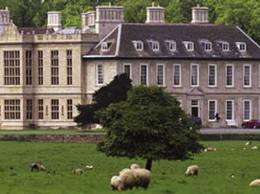 Stapleford Park
Stapleford Park
Surrounded by the magnificent 500 acres of Capability Brown landscaped grounds Stapleford Park is the perfect country sporting estate and sits in the heart of Leicestershire, near Melton Mowbray, minutes from Rutland Water. The Hall was the seat of the Sherard family, later the Earls of Harborough and from 1894, of Baron Gretton. Today, guests sleep in rooms decorated by Wedgwood, Turnbull and Asser and Crabtree and Evelyn.
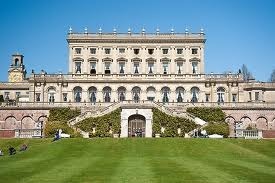 Cliveden House
Cliveden House
Located on the River Thames just outside London in Berkshire, Cliveden House is one of those stately homes where one wishes the walls could talk. According to their website: The first house was built in 1666 by the 2nd Duke of Buckingham. A notorious rake, schemer and wit, he created Cliveden as a hunting lodge where he could entertain his friends and mistress. Since then it has twice been destroyed by fire, only to emerge, phoenix-like, more stunning than before. The house has played host to virtually every British Monarch since George I and has been home to three Dukes, an Earl and Frederick Prince of Wales.
Queen Victoria, a frequent guest, was not amused in 1893 when the house was bought by William Waldorf Astor, America's richest citizen. When he gave it to his son and daughter-in-law in 1906 Cliveden became the hub of a hectic social whirl where guests included everyone from Charlie Chaplin to Winston Churchill, and President Roosevelt to George Bernard Shaw.
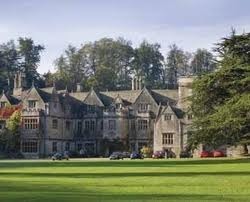 Bibury Court
Bibury Court
Bibury Court Hotel is set in a stunning Jacobean Mansion built in 1633. It dates from the late 16th Century, and was then extended in 1633 by Sir Thomas Sackville, the illegitimate son of the 1st Earl of Dorset who was 'Knight and gentleman-usher in dailie waiting on the King' (James I). Charles II is reputed to have visited the Court when he attended Bibury Races, as did the Prince Regent during the reign of George III.
The house remained in the Sackville family for several generations and through the female line passed to the Cresswells. It was them who, owing to a disputed will and years of litigation, sold the house in the last century to Lord Sherbourne. Charles Dickens is said to have written 'Bleak House' with this court case in mind. The interior was remodelled for Estcourt Cresswell in 1759. Later it fell into disrepair in the 1920s being refurbished for the Clark family in 1922 in whose ownership it remained until 1968 when it was sold after the death of Lady Clark, and turned into a hotel. It is situated in the beautiful Cotswolds area which is sprinkled with historic market towns, charming villages and centuries old country manors.
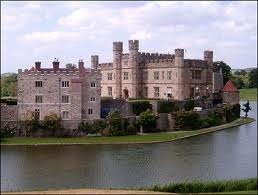 Leeds Castle
Leeds Castle
Well, really, what can one say about Leeds Castle? All you really need to know is that they have 14 bedrooms and three cottages on the estate that you can book by contacting them in advance. History? You want the history of the Castle? Click here.
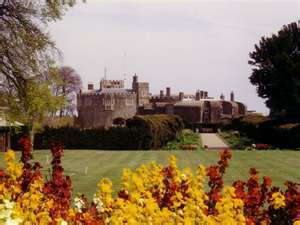
Of course, we personally think the pentultimate place to stay at is Walmer Castle, once home to the Duke of Wellington as Walmer Castle was the official residence of the Lord Warden of the Cinque Ports – a title previously held by both the Duke of Wellington (23 years) and the Queen Mother. The Duke used Walmer often and preferred it to any other home, inviting a stellar line-up of guests to stay for extended periods. The Duke's great good friend, the widowed Charles Arbuthnot, lived with Wellington at Walmer and they regularly walked the grounds together, often strolling the battlements of the Castle. Wellington's housekeeper at Walmer fondly called the elderly pair, "our two dear old gentlemen." Arbuthnot died in 1850 at Apsley House, the Duke of Wellington died in 1852 at Walmer Castle. Today, guests can stay in either the Greenhouse Apartment overlooking the kitchen garden which has supplied the castle for more than 300 years or the Garden Cottage with a master bedroom overlooking the Castle. For a look at all properties available to rent from English Heritage, click here.[image error]
 Stapleford Park
Stapleford Park Surrounded by the magnificent 500 acres of Capability Brown landscaped grounds Stapleford Park is the perfect country sporting estate and sits in the heart of Leicestershire, near Melton Mowbray, minutes from Rutland Water. The Hall was the seat of the Sherard family, later the Earls of Harborough and from 1894, of Baron Gretton. Today, guests sleep in rooms decorated by Wedgwood, Turnbull and Asser and Crabtree and Evelyn.
 Cliveden House
Cliveden House Located on the River Thames just outside London in Berkshire, Cliveden House is one of those stately homes where one wishes the walls could talk. According to their website: The first house was built in 1666 by the 2nd Duke of Buckingham. A notorious rake, schemer and wit, he created Cliveden as a hunting lodge where he could entertain his friends and mistress. Since then it has twice been destroyed by fire, only to emerge, phoenix-like, more stunning than before. The house has played host to virtually every British Monarch since George I and has been home to three Dukes, an Earl and Frederick Prince of Wales.
Queen Victoria, a frequent guest, was not amused in 1893 when the house was bought by William Waldorf Astor, America's richest citizen. When he gave it to his son and daughter-in-law in 1906 Cliveden became the hub of a hectic social whirl where guests included everyone from Charlie Chaplin to Winston Churchill, and President Roosevelt to George Bernard Shaw.
 Bibury Court
Bibury Court Bibury Court Hotel is set in a stunning Jacobean Mansion built in 1633. It dates from the late 16th Century, and was then extended in 1633 by Sir Thomas Sackville, the illegitimate son of the 1st Earl of Dorset who was 'Knight and gentleman-usher in dailie waiting on the King' (James I). Charles II is reputed to have visited the Court when he attended Bibury Races, as did the Prince Regent during the reign of George III.
The house remained in the Sackville family for several generations and through the female line passed to the Cresswells. It was them who, owing to a disputed will and years of litigation, sold the house in the last century to Lord Sherbourne. Charles Dickens is said to have written 'Bleak House' with this court case in mind. The interior was remodelled for Estcourt Cresswell in 1759. Later it fell into disrepair in the 1920s being refurbished for the Clark family in 1922 in whose ownership it remained until 1968 when it was sold after the death of Lady Clark, and turned into a hotel. It is situated in the beautiful Cotswolds area which is sprinkled with historic market towns, charming villages and centuries old country manors.
 Leeds Castle
Leeds Castle Well, really, what can one say about Leeds Castle? All you really need to know is that they have 14 bedrooms and three cottages on the estate that you can book by contacting them in advance. History? You want the history of the Castle? Click here.

Of course, we personally think the pentultimate place to stay at is Walmer Castle, once home to the Duke of Wellington as Walmer Castle was the official residence of the Lord Warden of the Cinque Ports – a title previously held by both the Duke of Wellington (23 years) and the Queen Mother. The Duke used Walmer often and preferred it to any other home, inviting a stellar line-up of guests to stay for extended periods. The Duke's great good friend, the widowed Charles Arbuthnot, lived with Wellington at Walmer and they regularly walked the grounds together, often strolling the battlements of the Castle. Wellington's housekeeper at Walmer fondly called the elderly pair, "our two dear old gentlemen." Arbuthnot died in 1850 at Apsley House, the Duke of Wellington died in 1852 at Walmer Castle. Today, guests can stay in either the Greenhouse Apartment overlooking the kitchen garden which has supplied the castle for more than 300 years or the Garden Cottage with a master bedroom overlooking the Castle. For a look at all properties available to rent from English Heritage, click here.[image error]
Published on March 10, 2011 01:31
March 9, 2011
Staying With Friends
Alas, there are very few ways in which we British History afficianados can truly recreate and experience what life was like in centuries past. However, it is possible to get the flavor of what it must have been like to travel down to the country and stay with friends at their Stately Pile for a few days. We've found a few magnificent estates that are now hotels. True, they have modern day conveniences and you most likely won't be greeted at the door by the family butler or offered a candelabra to light your way to your room, but it's the closest we can come to experiencing true country house hospitality.
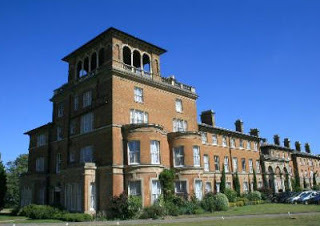 Oatlands Park Hotel
Oatlands Park Hotel
Located 18 miles outside of London in Surrey, Oatlands has a royal pedigree and strong Regency connections - Brummell and Alvanley were both frequent guests of the owners, the Duke and Duchess of York, who leased the property from the Crown in 1790. In 1794 the mansion was burnt down and was then rebuilt in the Gothic style of the period. After the death of the Duchess of York in 1820, the whole property was sold. It was bought by Edward Hughes (Golden) Ball Hughes in 1824 (although it was not until after the Duke's death in 1827 that the sale was finally concluded) and again remodelled in 1830. Hughes had actually tried to dispose of the estate by public auction in 1829 but this part did not sell. He let the Mansion and the adjoining parkland to Lord Francis Egerton for a seven-year period in 1832 and renewed for a similar period in 1839. The arrival of the London and South Western Railway in 1838 made the area ripe for 'a daily commute to town' and in 1846 the estate was broken up into lots for building development and sold at three public auctions in May, August and September of that year. Following a period of private ownership by James Watts Peppercorne, the house became a hotel in 1856 known as the South Western (later Oatlands Park) Hotel. The present day Oatlands Park Hotel occupies the site where the Oatlands Mansion (Oatlands House) once stood and no doubt so long as you're paying for your room, management will allow you to bring your Fat Friend along.
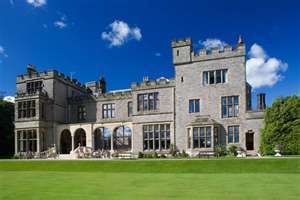 Armathwaite Hall
Armathwaite Hall
Located in the Lake District, Armathwaite Hall stands on the previous site of the Manor of Bassenthwaite, given to the illegitimate brother of Allan, the Second Lord of Allerdale and Gospatrick took on the name de Bassenthwaite. Another family, the Highmore family, who owned the Hall 1540 to 1748, offered hospitality to the infamous Bonnie Prince Charlie and the Duke of Cumberland during the 1745 uprising at their other residence in Carlisle. In 1748 James Spedding, Squire to Lord Egremont of Cockermouth Castle acquired the Hall and it stayed in his family for three generations until it was sold to Sir Frederick Fletcher-Vane in 1796. This family extended the Hall in 1817 by building a courtyard, a chapel and partially extending the building towards the lake. Four generations of the Fletcher-Vane family resided here until 1850 when it was sold to Mr. Boustead. Hotel guests can book in for a spot of clay shooting or archery.
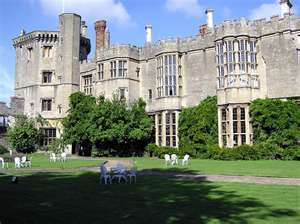 Thornbury Castle
Thornbury Castle
When Henry VIII came to the throne, the Duke of Buckingham, owner of Thornbury Castle in Gloucestershire, stood in high favour with his Royal Master. He was the most affluent and most honoured nobleman in the country - Constable of England. He was the King's Lieutenant and commanded in his absence. He was with his Sovereign in 1513 at the Battle of the Spurs in Picardy, and in 1520 whilst on his way to France to take part in the campaign of the Field of the Cloth of Gold, he visited Tonbridge where he had a large estate and had cause to dismiss a steward called Kynvett. To avenge himself the steward passed on to Cardinal Wolsey certain indiscreet words uttered by the Duke. It is not known for certain whether Buckingham had serious thought regarding the throne, but he was the great grandson of Edward III's youngest son, Thomas of Woodstock, and if Mary Tudor's succession at that time was denied he thought he stood heir to the throne. Henry VIII certainly seems to have thought there was some danger because on the Duke's return from France he was arrested and taken to London, where he was found guilty of high treason and executed on Tower Hill.
Henry VIII appropriated the castle and for 33 years it remained a royal demesne, and in 1533 he and Anne Boleyn spent 10 days here. Mary Tudor also spent some years here as a princess, and upon her death in 1554 she returned the Castle to the descendants of the late Duke. For the next two centuries the castle was unoccupied and fell into ruin. In the 1850s the Castle became once more a family residence, being home to the Howards, then the Clifford family, Kenneth Bell MBE, The Baron and Baroness of Portlethen, and now forms part of the von Essen private collection of country house hotels.
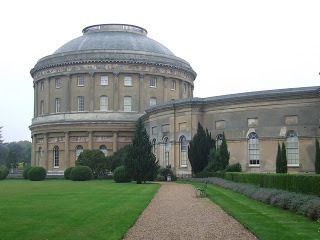 Ickworth House
Ickworth House
Ickworth House, now the Ickworth Hotel , is simply steeped in scandal. This from Wikipedia: Ickworth House is a country house outside Bury St. Edmunds, Suffolk, England. It is a neoclassical structure topped by a giant rotunda in a park laid out by Capability Brown. Ickworth had been in the ownership of the Hervey family from the 15th century. The house, park, and a large endowment were given to the National Trust in 1956 in lieu of death duties. As part of the handover agreement, a 99-year lease on the 60-room East Wing was given to the Marquess of Bristol. The Letter of Wishes of the 4th Marquess of Bristol stated that accommodation should always be available for the head of the Hervey family (the Marques of Bristol) at Ickworth. However, in 1998 the 7th Marquess of Bristol, partly for financial reasons, and partly in response to an eviction suit stemming from his behaviour on the property, sold the remaining lease on the East Wing to the National Trust. The Trust subsequently refused to re-sell the leasehold to the 8th Marquess of Bristol on his succeeding to the title in 1999. There is now a 27-bedroom hotel in the East Wing.
Part Two Coming Soon!

 Oatlands Park Hotel
Oatlands Park HotelLocated 18 miles outside of London in Surrey, Oatlands has a royal pedigree and strong Regency connections - Brummell and Alvanley were both frequent guests of the owners, the Duke and Duchess of York, who leased the property from the Crown in 1790. In 1794 the mansion was burnt down and was then rebuilt in the Gothic style of the period. After the death of the Duchess of York in 1820, the whole property was sold. It was bought by Edward Hughes (Golden) Ball Hughes in 1824 (although it was not until after the Duke's death in 1827 that the sale was finally concluded) and again remodelled in 1830. Hughes had actually tried to dispose of the estate by public auction in 1829 but this part did not sell. He let the Mansion and the adjoining parkland to Lord Francis Egerton for a seven-year period in 1832 and renewed for a similar period in 1839. The arrival of the London and South Western Railway in 1838 made the area ripe for 'a daily commute to town' and in 1846 the estate was broken up into lots for building development and sold at three public auctions in May, August and September of that year. Following a period of private ownership by James Watts Peppercorne, the house became a hotel in 1856 known as the South Western (later Oatlands Park) Hotel. The present day Oatlands Park Hotel occupies the site where the Oatlands Mansion (Oatlands House) once stood and no doubt so long as you're paying for your room, management will allow you to bring your Fat Friend along.
 Armathwaite Hall
Armathwaite Hall Located in the Lake District, Armathwaite Hall stands on the previous site of the Manor of Bassenthwaite, given to the illegitimate brother of Allan, the Second Lord of Allerdale and Gospatrick took on the name de Bassenthwaite. Another family, the Highmore family, who owned the Hall 1540 to 1748, offered hospitality to the infamous Bonnie Prince Charlie and the Duke of Cumberland during the 1745 uprising at their other residence in Carlisle. In 1748 James Spedding, Squire to Lord Egremont of Cockermouth Castle acquired the Hall and it stayed in his family for three generations until it was sold to Sir Frederick Fletcher-Vane in 1796. This family extended the Hall in 1817 by building a courtyard, a chapel and partially extending the building towards the lake. Four generations of the Fletcher-Vane family resided here until 1850 when it was sold to Mr. Boustead. Hotel guests can book in for a spot of clay shooting or archery.
 Thornbury Castle
Thornbury CastleWhen Henry VIII came to the throne, the Duke of Buckingham, owner of Thornbury Castle in Gloucestershire, stood in high favour with his Royal Master. He was the most affluent and most honoured nobleman in the country - Constable of England. He was the King's Lieutenant and commanded in his absence. He was with his Sovereign in 1513 at the Battle of the Spurs in Picardy, and in 1520 whilst on his way to France to take part in the campaign of the Field of the Cloth of Gold, he visited Tonbridge where he had a large estate and had cause to dismiss a steward called Kynvett. To avenge himself the steward passed on to Cardinal Wolsey certain indiscreet words uttered by the Duke. It is not known for certain whether Buckingham had serious thought regarding the throne, but he was the great grandson of Edward III's youngest son, Thomas of Woodstock, and if Mary Tudor's succession at that time was denied he thought he stood heir to the throne. Henry VIII certainly seems to have thought there was some danger because on the Duke's return from France he was arrested and taken to London, where he was found guilty of high treason and executed on Tower Hill.
Henry VIII appropriated the castle and for 33 years it remained a royal demesne, and in 1533 he and Anne Boleyn spent 10 days here. Mary Tudor also spent some years here as a princess, and upon her death in 1554 she returned the Castle to the descendants of the late Duke. For the next two centuries the castle was unoccupied and fell into ruin. In the 1850s the Castle became once more a family residence, being home to the Howards, then the Clifford family, Kenneth Bell MBE, The Baron and Baroness of Portlethen, and now forms part of the von Essen private collection of country house hotels.
 Ickworth House
Ickworth HouseIckworth House, now the Ickworth Hotel , is simply steeped in scandal. This from Wikipedia: Ickworth House is a country house outside Bury St. Edmunds, Suffolk, England. It is a neoclassical structure topped by a giant rotunda in a park laid out by Capability Brown. Ickworth had been in the ownership of the Hervey family from the 15th century. The house, park, and a large endowment were given to the National Trust in 1956 in lieu of death duties. As part of the handover agreement, a 99-year lease on the 60-room East Wing was given to the Marquess of Bristol. The Letter of Wishes of the 4th Marquess of Bristol stated that accommodation should always be available for the head of the Hervey family (the Marques of Bristol) at Ickworth. However, in 1998 the 7th Marquess of Bristol, partly for financial reasons, and partly in response to an eviction suit stemming from his behaviour on the property, sold the remaining lease on the East Wing to the National Trust. The Trust subsequently refused to re-sell the leasehold to the 8th Marquess of Bristol on his succeeding to the title in 1999. There is now a 27-bedroom hotel in the East Wing.
Part Two Coming Soon!
Published on March 09, 2011 00:45
March 8, 2011
Magnificence at Yale Center for British Art, Part One
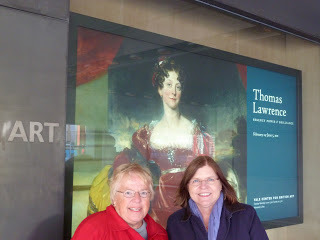 Words fail me (Victoria here) when I try to describe how much I enjoyed seeing Thomas Lawrence: Regency Power and Brilliance in New Haven CT. Kristine wrote about the exhibition on this blog when it was in London at the National Portrait Gallery and Jo Manning did several follow-ups on Lawrence. But it's pretty hard to prepare oneself for standing before a larger-than-life canvas in sparkling colors and knowing there are dozens more just outside your peripheral vision. To the right, Diane Gaston and I prepare to enter the Yale Center for British Art on a bright sunny day after a long drive from Washington, DC. Many thanks to our chauffeur cum photographer, Jim Perkins, Diane's DH.
Words fail me (Victoria here) when I try to describe how much I enjoyed seeing Thomas Lawrence: Regency Power and Brilliance in New Haven CT. Kristine wrote about the exhibition on this blog when it was in London at the National Portrait Gallery and Jo Manning did several follow-ups on Lawrence. But it's pretty hard to prepare oneself for standing before a larger-than-life canvas in sparkling colors and knowing there are dozens more just outside your peripheral vision. To the right, Diane Gaston and I prepare to enter the Yale Center for British Art on a bright sunny day after a long drive from Washington, DC. Many thanks to our chauffeur cum photographer, Jim Perkins, Diane's DH.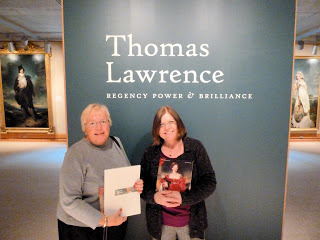 No pictures were allowed in the exhibition, but we asked if we could take one at the entrance and they said yes. Behind the entrance panel, you get a glimpse of two of the nearly-overwhelming portraits. Left is Lord Mountstuart, from a private collection, and on the right, the famous portrait of Elizabeth Farren, actress, later Countess of Derby. Diane and I had already been through the exhibition once or we could not have stood still long enough for the shot. Think we were excited? Oh, just a little!
No pictures were allowed in the exhibition, but we asked if we could take one at the entrance and they said yes. Behind the entrance panel, you get a glimpse of two of the nearly-overwhelming portraits. Left is Lord Mountstuart, from a private collection, and on the right, the famous portrait of Elizabeth Farren, actress, later Countess of Derby. Diane and I had already been through the exhibition once or we could not have stood still long enough for the shot. Think we were excited? Oh, just a little!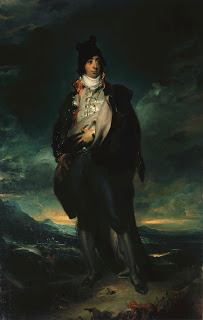 John, Lord Mountstuart (1767-94) is a stunning example of raw masculinity that shocked some viewers (like the King!) when it was displayed at the Royal Academy in 1795. Like many of Lawrence's portraits -- if not all -- the dramatic setting is enhanced by the exquisite detail and highlights of white, silver and pink. Lord Mountstuart stands on the edge of a precipice, with Spanish mountains and the Palace of Escorial in the background. Lawrence began this portrait before Mountstuart's unexpected death at a young age.
John, Lord Mountstuart (1767-94) is a stunning example of raw masculinity that shocked some viewers (like the King!) when it was displayed at the Royal Academy in 1795. Like many of Lawrence's portraits -- if not all -- the dramatic setting is enhanced by the exquisite detail and highlights of white, silver and pink. Lord Mountstuart stands on the edge of a precipice, with Spanish mountains and the Palace of Escorial in the background. Lawrence began this portrait before Mountstuart's unexpected death at a young age.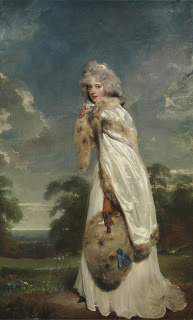 Like several of the other portraits, I had visited before with Elizabeth Farren (1759-62-1829) in her usual home at New York's Metropolitan Museum of Art. I want to put in a reminder here of the excellent novel about Miss Farren, the Earl of Derby (her eventual husband), Anne Damer, and other luminaries in the highest social circles of early 19th c. London, written by acclaimed novelist Emma Donoghue (author of the current best seller, Room). Entitled Life Mask, this is a fascinating fictional account of real people and their intertwined lives, some of it imagined, some of it factual. More details here.
Like several of the other portraits, I had visited before with Elizabeth Farren (1759-62-1829) in her usual home at New York's Metropolitan Museum of Art. I want to put in a reminder here of the excellent novel about Miss Farren, the Earl of Derby (her eventual husband), Anne Damer, and other luminaries in the highest social circles of early 19th c. London, written by acclaimed novelist Emma Donoghue (author of the current best seller, Room). Entitled Life Mask, this is a fascinating fictional account of real people and their intertwined lives, some of it imagined, some of it factual. More details here. Lawrence is at his best, carrying on in the tradition of Van Dyke, Gainsborough and others by painting the fabrics so realistically you think you could feel the satin if you touched it. I covet that muff, by the way.
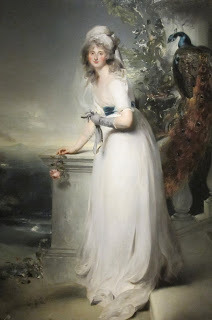 Most commentators on Lawrence make a big point of the way he flattered his sitters, sometimes outrageously so, as in the portraits of George IV. But there were a few exceptions to his usual flattery in this exhibition. For example, the Portrait of Catherine Rebecca Grey, Lady Manners, later Lady Huntingtower (1766-1852). It is a fine portrait, with excellent details. But I would not say this straight on view of her face is particularly complimentary. Instead, she looks almost surprised to find us staring at her. The brightly colored peacock beside her draws the viewer's attention away from her face. The fine sheer dress fabric is painted as realistically as Farren's satin, puddling around her feet like a wispy little cloud. And the rose in her right hand is perfection.
Most commentators on Lawrence make a big point of the way he flattered his sitters, sometimes outrageously so, as in the portraits of George IV. But there were a few exceptions to his usual flattery in this exhibition. For example, the Portrait of Catherine Rebecca Grey, Lady Manners, later Lady Huntingtower (1766-1852). It is a fine portrait, with excellent details. But I would not say this straight on view of her face is particularly complimentary. Instead, she looks almost surprised to find us staring at her. The brightly colored peacock beside her draws the viewer's attention away from her face. The fine sheer dress fabric is painted as realistically as Farren's satin, puddling around her feet like a wispy little cloud. And the rose in her right hand is perfection. I don't mean to infer that she is not attractive, but only that a three-quarter view might have been much more flattering. That word again. This portrait belongs to the Cleveland Museum of Art, like many of the others on loan to this exhibition. Yale is the second and last venue for Thomas Lawrence: Regency Power and Brilliance, on view until June 5, 2011.
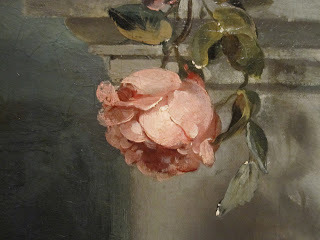 detail of Catherine Grey, Lady Manners
detail of Catherine Grey, Lady Manners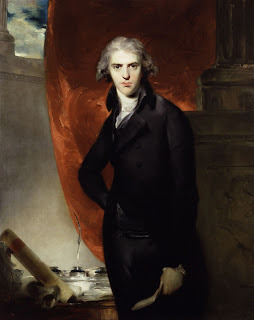 The other portrait I find less than flattering is this view of Robert Banks Jenkinson, later the 2nd Earl of Liverpool (1770-1828). Again, the head-on view does not compliment him. He seems to be frowning and his lip is slightly curled, almost as if beginning a sneer. This painting dates from 1793-96 when Lawrence was doing many statesmen and politicians, and flattering many of them. Another Lawrence picture (not in this exhibition) of Lord Liverpool done 33 years later, portrays him as less confrontational yes equally sure of himself.
The other portrait I find less than flattering is this view of Robert Banks Jenkinson, later the 2nd Earl of Liverpool (1770-1828). Again, the head-on view does not compliment him. He seems to be frowning and his lip is slightly curled, almost as if beginning a sneer. This painting dates from 1793-96 when Lawrence was doing many statesmen and politicians, and flattering many of them. Another Lawrence picture (not in this exhibition) of Lord Liverpool done 33 years later, portrays him as less confrontational yes equally sure of himself. 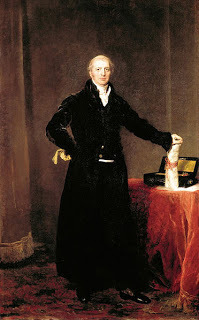
At right, Lord Liverpool in 1826 as Prime Minister, in the National Portrait Gallery (not in the Yale exhibition)
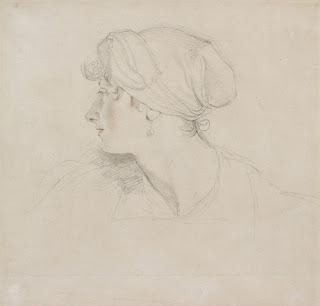 This drawing of Isabella Wolff (c.1771-1829) is one of many Lawrence did of his close friend Mrs. Wolff. The exhibition catalogue cautions us not to consider these sketches are preliminary to the oil portrait below, though there are similarities for sure.
This drawing of Isabella Wolff (c.1771-1829) is one of many Lawrence did of his close friend Mrs. Wolff. The exhibition catalogue cautions us not to consider these sketches are preliminary to the oil portrait below, though there are similarities for sure. 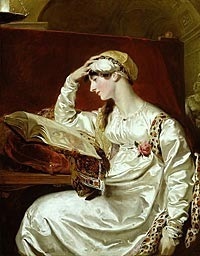
Isabella Wolff and Thomas Lawrence remained dear friends for many years, and were sometimes suspected of being lovers. For more on Lawrence's love life, go backward in this blog to Jo Manning's essays on January 8, 9, and 10th, 2011.
This is probably the first Thomas Lawrence canvas I saw as a child. At the Art Institute of Chicago, it was my favorite picture. Maybe it still is.
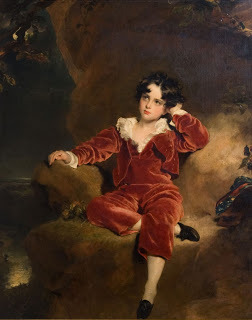
As one of the reviews of the exhibition said, many of us became more than familiar with some Lawrence images because we saw them on biscuit tins and other ads or labels. Or in multiple prints, even paint-by-number sets.This charming view of a thoughtful (or bored) little boy is one of those biscuit tin portraits -- you've seen it a million times, though you can't remember quite where. This is Charles William Lambton, painted in 1825, now in a private collection. Charles was about seven in the portrait and he died just six years later at age thirteen. That gives a distinct poignant twist to this familiar face.
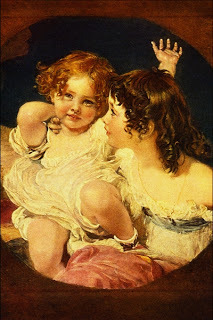 Another very familiar picture, The Calmady Children (Laura Anne and Emily), is included in the show, from the Metropolitan Museum of Art. This pose too, can be found "everywhere." And it is not hard to see why. Thomas Lawrence was wonderful with children. Though he had none of his own, never having married, he captured the innocence and joy of childhood in a magical way. A picture not in this exhibition, usually known as Pinkie, is probably THE most famous, most reproduced, used and mis-used of Lawrence's work.
Another very familiar picture, The Calmady Children (Laura Anne and Emily), is included in the show, from the Metropolitan Museum of Art. This pose too, can be found "everywhere." And it is not hard to see why. Thomas Lawrence was wonderful with children. Though he had none of his own, never having married, he captured the innocence and joy of childhood in a magical way. A picture not in this exhibition, usually known as Pinkie, is probably THE most famous, most reproduced, used and mis-used of Lawrence's work.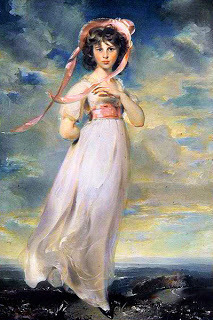 Pinkie is a portrait of Sarah Barrett Moulton painted in 1794. It can be seen at the Huntington Library and Museum of Art in San Marino, CA. It is often shown with a Gainsborough portrait called Blue Boy. (Again, this picture is not in the Yale exhibition.) I actually think I've seen Pinkie on a tea towel.
Pinkie is a portrait of Sarah Barrett Moulton painted in 1794. It can be seen at the Huntington Library and Museum of Art in San Marino, CA. It is often shown with a Gainsborough portrait called Blue Boy. (Again, this picture is not in the Yale exhibition.) I actually think I've seen Pinkie on a tea towel.
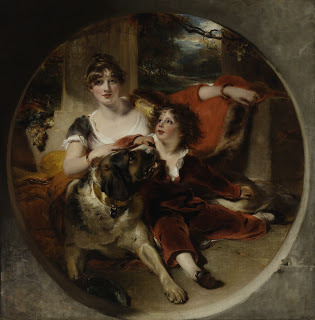 To conclude part one of our visit to the exhibition, here is a lovely family group, another in Lawrence's bravura style. The beautiful lady and her son, heir to a great title, with their faithful dog in a scene that will be a family heirloom forever. But wait!!! This is a portrait of Mrs. Frances Hawkins and her Son, John James Hamilton, painted in 1805-6.
To conclude part one of our visit to the exhibition, here is a lovely family group, another in Lawrence's bravura style. The beautiful lady and her son, heir to a great title, with their faithful dog in a scene that will be a family heirloom forever. But wait!!! This is a portrait of Mrs. Frances Hawkins and her Son, John James Hamilton, painted in 1805-6. Mrs. Hawkins was a mistress of the imperious 1st Marquess of Abercorn and young John was his son by her. He had several other children by his three wives. Nevertheless, the picture was displayed at the Royal Academy in 1806. One London newspaper found it "deficient in sobriety and simplicity." Another commented that the dog was too big and disliked the view through the circular wall.
Diane Gaston and I want to thank Amy McDonald and Kaci Bayless for their assistance and hospitality at the Yale Center for British Art. Everyone was cheerful, helpful and welcoming. We wish we could have attended one of the many programs accompanying the exhibition. They are listed on-line if you click here. For more information on the exhibition, click here.
Diane has blogged on our visit and you can find her report here.
I will be back with lots more about Thomas Lawrence: Regency Power and Brilliance in days to come. Remember, the closing date is June 5, so make your plans to visit New Haven soon.
Published on March 08, 2011 02:00
March 7, 2011
Early Rumblings of a Regency From the Pens of Creevey, General and Captain Moore
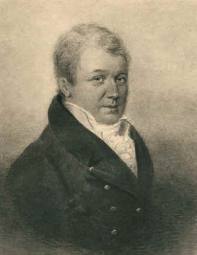 Thomas Creevey Mr. Creevey to Dr. Currie.
Thomas Creevey Mr. Creevey to Dr. Currie.
22nd Aug., 1803.
"... I saw a great deal of Sheridan. We dined together several times, got a little bosky, and he took great pains to convince me he was sincere and confidential with me. ... A plan of his relates to Ireland, and it is the substitution of a Council for the present Viceroy, the head of the Council to be the Prince of Wales, his assistants to be Lord Moira, Lord Hutchinson and Sheridan himself. The Prince is quite heated upon the subject; nothing else is discussed by them. Lord Hutchinson is as deep in the design as any of them, but God knows it is about as probable as the embassy of old Charley to Russia I believe Sherry is very much in the confidence of the Ministers. They have convinced him of the difficulty of pressing the King for any attentions to the Prince of Wales; he is quite set against him, and holds entirely to the Duke of York, who, on the other hand, is most odious to the Ministry. . . . Have you begun your visits to Knowsley yet? . . . If you see Mrs. Hornby, cultivate her. She is an excellent creature; her husband, the rector, is the most tiresome, prosy son of a ------ I ever met with, but is worthy. . . ."
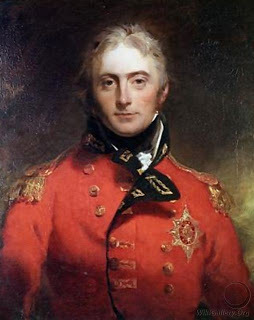 General Sir John Moore
General Sir John Moore
General Sir John Moore to Mr. Creevey.
Sandgate, 15th Sept., 1803.
". . . The newspapers have disposed of me and my troops at Lisbon and Cherbourgh, but we believe that we have not moved from this place. I begun to despair of seeing you here, and am quite happy to find that, at last, I am to have that pleasure. If the Miss Ords do not think they can trust to the Camp for beaux, or if they have any in attendance whose curiosity to see soldiers they may chuse to indulge, assure them that whoever accompanies them shall be cordially received by everybody here. . . ."
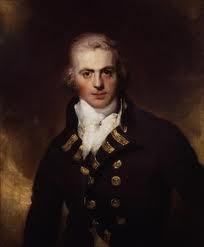 Capt. Graham Moore
Capt. Graham Moore
Capt. Graham Moore, R.N., to Mr. Creevey.
"Plymouth, August 7th, 1803. "... I never had to do with a new ship's company before made up of Falstaffs men—'decayed tapsters,' etc., so I do not bear that very well and I get no seamen but those who enter here at Plymouth, which are very few indeed. The Admiralty will not let me have any who enter for the ship at any of the other ports, which cuts up my hopes of a tolerable ship's company. ... I hear sometimes from my brother Jack. He says they have had a review of his whole Corps before the Duke of York. . . . My mother was more delighted with the scene than any boy or girl of fifteen. N.B.—she is near 70. . . . She is an excellent mother of a soldier. I am not afraid of showing her to Mrs. Creevey, altho' she is of a very different cast from what she has generally lived with. If Mrs. Creevey does not like her, I shall never feel how the devil she came to like me.
"Jack says his Corps are not at all what he would have them, yet that they will beat any of the French whom he leads them up to. I am convinced the French can make no progress in England, and do not believe now that they will attempt it; but how is all this to end? However that may be, as I am in for it, I wish to God I was tolerably ready, and scouring the seas. What the devil can Fox mean by his palaver about a military command for the Prince of Wales? That may come well enough from Mrs. Barham perhaps."
Capt. Graham Moore, R.N., to Mr. Creevey.
Plymouth Dock, Feby. 1st, 1804.
"... I suppose you mean to join the set that prepare to worry the poor Doctor (Addington) when Parliament meets. What can he do? He seems, or we seem, to do as well as Bonoparte—fretting and fuming and playing off his tricks from Calais to Boulogne and back again. The fellow has done too much for a mere hum; he certainly will try something, and I hope to be in at the death of some of his expeditions. If they do not take my men, we shall soon be ready for sea again. New copper, my boy! we shall sail like the wind. . . ."
Mr. Creevey to Dr. Currie.
"2nd May, 1804.
". . . It is felt by the Pittites that the Prince and a Regency must be resorted to, and as the Prince evinced on every occasion the strongest decision in favor of Fox, the Pittites are preparing for a reciprocity of good offices. God send we may have a Regency, and then the cards are in our hands. I wish you had seen the party of which I formed one in the Park just now. Lord Buckingham, his son Temple, Ld. Derby, Charles Grey, Ld. Fitzwilliam, Canning, Ld. Morpeth and Ld. Stafford. . . . The four physicians were at Buckingham House this morning: I feel certain he (the King) is devilish bad."
But, as we know, the Regency did not begin for another seven years. We will post a number of excerpts from the many diarists and prolific letter writers of the Regency era in future blogs. Watch for more from Mr. Creevey, his friends, his enemies and those who never had the privilege to be either.
 Thomas Creevey Mr. Creevey to Dr. Currie.
Thomas Creevey Mr. Creevey to Dr. Currie. 22nd Aug., 1803.
"... I saw a great deal of Sheridan. We dined together several times, got a little bosky, and he took great pains to convince me he was sincere and confidential with me. ... A plan of his relates to Ireland, and it is the substitution of a Council for the present Viceroy, the head of the Council to be the Prince of Wales, his assistants to be Lord Moira, Lord Hutchinson and Sheridan himself. The Prince is quite heated upon the subject; nothing else is discussed by them. Lord Hutchinson is as deep in the design as any of them, but God knows it is about as probable as the embassy of old Charley to Russia I believe Sherry is very much in the confidence of the Ministers. They have convinced him of the difficulty of pressing the King for any attentions to the Prince of Wales; he is quite set against him, and holds entirely to the Duke of York, who, on the other hand, is most odious to the Ministry. . . . Have you begun your visits to Knowsley yet? . . . If you see Mrs. Hornby, cultivate her. She is an excellent creature; her husband, the rector, is the most tiresome, prosy son of a ------ I ever met with, but is worthy. . . ."
 General Sir John Moore
General Sir John Moore General Sir John Moore to Mr. Creevey.
Sandgate, 15th Sept., 1803.
". . . The newspapers have disposed of me and my troops at Lisbon and Cherbourgh, but we believe that we have not moved from this place. I begun to despair of seeing you here, and am quite happy to find that, at last, I am to have that pleasure. If the Miss Ords do not think they can trust to the Camp for beaux, or if they have any in attendance whose curiosity to see soldiers they may chuse to indulge, assure them that whoever accompanies them shall be cordially received by everybody here. . . ."
 Capt. Graham Moore
Capt. Graham MooreCapt. Graham Moore, R.N., to Mr. Creevey.
"Plymouth, August 7th, 1803. "... I never had to do with a new ship's company before made up of Falstaffs men—'decayed tapsters,' etc., so I do not bear that very well and I get no seamen but those who enter here at Plymouth, which are very few indeed. The Admiralty will not let me have any who enter for the ship at any of the other ports, which cuts up my hopes of a tolerable ship's company. ... I hear sometimes from my brother Jack. He says they have had a review of his whole Corps before the Duke of York. . . . My mother was more delighted with the scene than any boy or girl of fifteen. N.B.—she is near 70. . . . She is an excellent mother of a soldier. I am not afraid of showing her to Mrs. Creevey, altho' she is of a very different cast from what she has generally lived with. If Mrs. Creevey does not like her, I shall never feel how the devil she came to like me.
"Jack says his Corps are not at all what he would have them, yet that they will beat any of the French whom he leads them up to. I am convinced the French can make no progress in England, and do not believe now that they will attempt it; but how is all this to end? However that may be, as I am in for it, I wish to God I was tolerably ready, and scouring the seas. What the devil can Fox mean by his palaver about a military command for the Prince of Wales? That may come well enough from Mrs. Barham perhaps."
Capt. Graham Moore, R.N., to Mr. Creevey.
Plymouth Dock, Feby. 1st, 1804.
"... I suppose you mean to join the set that prepare to worry the poor Doctor (Addington) when Parliament meets. What can he do? He seems, or we seem, to do as well as Bonoparte—fretting and fuming and playing off his tricks from Calais to Boulogne and back again. The fellow has done too much for a mere hum; he certainly will try something, and I hope to be in at the death of some of his expeditions. If they do not take my men, we shall soon be ready for sea again. New copper, my boy! we shall sail like the wind. . . ."
Mr. Creevey to Dr. Currie.
"2nd May, 1804.
". . . It is felt by the Pittites that the Prince and a Regency must be resorted to, and as the Prince evinced on every occasion the strongest decision in favor of Fox, the Pittites are preparing for a reciprocity of good offices. God send we may have a Regency, and then the cards are in our hands. I wish you had seen the party of which I formed one in the Park just now. Lord Buckingham, his son Temple, Ld. Derby, Charles Grey, Ld. Fitzwilliam, Canning, Ld. Morpeth and Ld. Stafford. . . . The four physicians were at Buckingham House this morning: I feel certain he (the King) is devilish bad."
But, as we know, the Regency did not begin for another seven years. We will post a number of excerpts from the many diarists and prolific letter writers of the Regency era in future blogs. Watch for more from Mr. Creevey, his friends, his enemies and those who never had the privilege to be either.
Published on March 07, 2011 01:03
March 6, 2011
The Lady Who Went Too Far
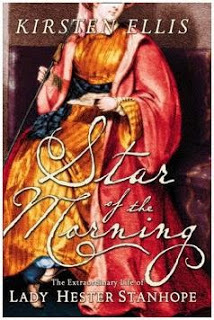
A new film has been announced - The Lady Who Went Too Far. From the writer and producer of The King's Speech comes the story of Lady Hester Stanhope, based on the biography "Star of the Morning," by Kirsten Ellis. Set during the Napoleonic Wars, the story follows the life of world traveler Stanhope and contains elements of a political thriller as Hester moves through Europe and the Middle East.
"She was a female Lawrence of Arabia, a hundred years before Lawrence," said screenwriter David Seidler, whose credits also include Tucker: The Man And His Dream.
"It wasn't that she was trying to change the world, she was just living the life that she thought she should have been afforded, to go on these great adventures, she did have a voice that should be heard," producer Gareth Unwin told Screen. "If you ever want to find great stories, you only have to look to our past."
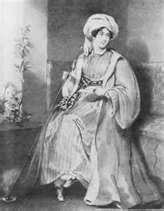 Lady Hester Stanhope "Hers is a very powerful story that's never been told cinematically before," added biographer Kirsten Ellis. "She's an undiscovered iconic emblem and the film will lift the lid on what made Hester spend half her life in the Middle East and what she tried to achieve there."
Lady Hester Stanhope "Hers is a very powerful story that's never been told cinematically before," added biographer Kirsten Ellis. "She's an undiscovered iconic emblem and the film will lift the lid on what made Hester spend half her life in the Middle East and what she tried to achieve there."In reviewing the book for The Independent, Robert Irwin swipes at Hester by closing with, "Though she (Ellis) writes well, it is not clear that her subject deserves so much devotion. During communal strife, Hester sheltered refugees and could be generous, but more often she was mean. She was also histrionic, superstitious, malicious and vainglorious. One has to rid oneself of the romantic trappings in order to see Hester Stanhope as what she became before her death in 1839 – a batty and embittered old English expat living on tick. There are thousands like her all over the world today."
Of course, Reader, we are not concerned with those living today. We are, however, always interested in a true 19th century character, and as such Hester qualifies. As does Brummell if one is going to speak of being "histrionic, superstitious, malicious and vainglorious," not to mention living on the tick. If authors were to stick only to those subjects who were worthy of praise or plaudits, the non-fiction shelves would be bare, indeed. Brava to Ellis for taking Hester on. We wait to hear who will play her in the film.
You can find Ellis's book at Amazon here and visit the author's website here[image error]
Published on March 06, 2011 01:39
March 5, 2011
Demmed Painters
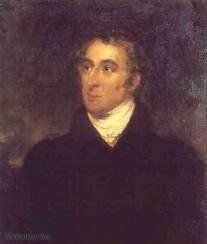
From the Duke of Wellington to Lady Shelley
London, March 1, 1825.
My Dearest Lady,
" . . . . I wish that I could as easily to myself satisfy you about the picture. But I cannot describe to you the inconvenience it is to me to sit. In fact, between Cabinets, Committees of the House of Lords, conferences with foreign Ministers and our own Ministers, etc., etc., the painters take up the only time I should have, if it was not for them, to transact business of any kind, or to read anything.
"I should not, nor do I, mind attending a good artist. But really, to sit as a ' Study ' to a young one who will never paint a picture as long as he breathes; and to pass three hours with him, and to have even one's own reflections interrupted by his impertinence during that time, is more than human patience, even mine, can bear.
"However, I have promised him one more sitting, and he shall have it. But mind, that will make the tenth for this picture—viz. six at Maresfield and four in London; and I know that, after all, it will not be worth a pin!
Ever yours most affectionately,
Wellington
The portrait referenced appears at the top of the post. Is it, or is it not, worth a pin, after all?[image error]
Published on March 05, 2011 01:02
March 4, 2011
Update from Yale...
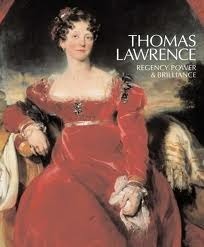
Victoria here in new Haven CT, on a sunny but chilly day. Diane Gaston and I had a delightful visit to Sir Thomas Lawrence yesterday at Yale's Center for British Art. I wish every one of our readers could have joined us for this feast of magnificent art: the exhibition Sir Thomas Lawrence: Regency Power and Brilliance. The show runs through June 5, 2011, so you have time to walk, run or crawl to see it.
Kristine and Jo Manning have reported about the exhibit as shown in London's National Portrait Gallery on this blog. So Diane and I were prepared but nothing really could have readied us for the overwhelming views of so many beautiful, colorful and stunning canvases gathered together. WOW! And the drawings were also wonderful. I will have much more to say and show after we go back today to experience all of it again. And hit the gift shop, too. Yum.
Published on March 04, 2011 04:02
March 3, 2011
Look What I Found
During my decades long research into the life and times of the Duke of Wellington, I often think I've exhausted every scrap of info ever posted on the web about him. In frustration, I began to enter weird search terms in the hopes of finding something new - Wellington + dogs, Wellington + lobster, Wellington + Charlie Sheen. This worked fairly well, turning up scraps of new, odd and decidedly informative data. Then, I started doing the same semi-random searches using Google Images for other areas of research. I swan, you never know what's going to pop up. I had so much fun with a recent image search, I've decided to share it with you.
I entered "Regency+Row+Bath" in Google Images and got . . . .

This photo led me to a fabulous site titled Cheltonia, all about "the Curiosities of Cheltenham Spa, Past and Present." It's a site filled with articles and photos on various architectural details, old streets, placenames, maps and tons of historical tidbits. Warning: you'll be there awhile.
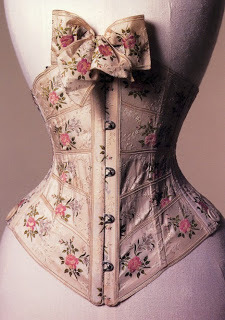
This photo linked to an Illustrated Glossary of Victorian Sartorial Terms, a subpage of A Compendium of 19th Century Fashions published by the University of Texas. Here's a photo of an 1801 Court Dress found on the site.
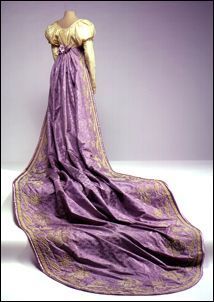
There are tons of fashions on the site, each photo gorgeous and each can be enlarged. Enjoy!
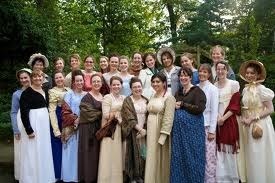
This photo led to a site called In Jane Austen's England, written by the lady who also runs Sense and Sensibility Patterns. It's a travel blog about her trips to England to walk in the Regency era. Last post appears to be 9/24/10, but there are tons of pages and pics from this amusing lady who now apparently lives in Kenya. The photos are beautiful and numerous and her text engaging.

I was led to a site called English Buildings: Meetings With Remarkable Buildings run by Philip Wilkinson, the author of The English Buildings Book, by the photo above. I liked the site so much that I've added it to our "Amusing Blogs" section.
And the photo below led me to a site called Demolition Exeter, about the destruction of that City's historic buildings and old streets.
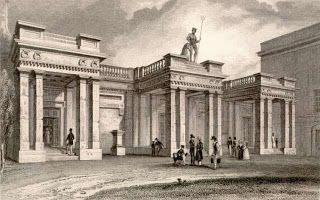
And finally, I met a girl with a sense of fashion and a sense of humour, Miss Nightingale, at Beyond the Pale, via this photo
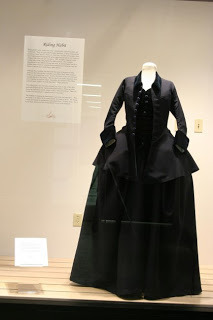
Here's a taste of Miss Nightingale's prose from her "About Me" section: "Affianced to a wonderful man, I currently reside in rather grandly named Royal Tunbridge Wells, located in the county of Kent in the UK. Far from living in the castle (or, at the very least, a medium sized mansion) we so obviously deserve, we live like paupers rent a small flat. I am waiting for that benevolent [yet previously unknown] relative to leave me their entire estate, and expect the hand-written-on-vellum letter from their Dickensian solicitors any day now…
"It should be obvious to even the most casual observer that I am pretty much obsessed with the Victorian and Edwardian [also, to a lesser extent, 1920's/30's/40's] eras, and have been for as long as I can remember. I distinctly recall my mother asking me what I would like to be when I was older. I replied: `A pickpocket!' which didn't exactly swell her maternal bosom with pride. Thank goodness I decided I wanted to be a ballet dancer [ha! Short-lived], an actress [secretly feel I missed my calling], a writer [secretly still wish] or Prime Minister [unwise] instead."
Lots of fashions, yuks and gorgeous photos - I've added Beyound the Pale to our blogroll, too.
More finds soon . . . . . .
I entered "Regency+Row+Bath" in Google Images and got . . . .

This photo led me to a fabulous site titled Cheltonia, all about "the Curiosities of Cheltenham Spa, Past and Present." It's a site filled with articles and photos on various architectural details, old streets, placenames, maps and tons of historical tidbits. Warning: you'll be there awhile.

This photo linked to an Illustrated Glossary of Victorian Sartorial Terms, a subpage of A Compendium of 19th Century Fashions published by the University of Texas. Here's a photo of an 1801 Court Dress found on the site.

There are tons of fashions on the site, each photo gorgeous and each can be enlarged. Enjoy!

This photo led to a site called In Jane Austen's England, written by the lady who also runs Sense and Sensibility Patterns. It's a travel blog about her trips to England to walk in the Regency era. Last post appears to be 9/24/10, but there are tons of pages and pics from this amusing lady who now apparently lives in Kenya. The photos are beautiful and numerous and her text engaging.

I was led to a site called English Buildings: Meetings With Remarkable Buildings run by Philip Wilkinson, the author of The English Buildings Book, by the photo above. I liked the site so much that I've added it to our "Amusing Blogs" section.
And the photo below led me to a site called Demolition Exeter, about the destruction of that City's historic buildings and old streets.

And finally, I met a girl with a sense of fashion and a sense of humour, Miss Nightingale, at Beyond the Pale, via this photo

Here's a taste of Miss Nightingale's prose from her "About Me" section: "Affianced to a wonderful man, I currently reside in rather grandly named Royal Tunbridge Wells, located in the county of Kent in the UK. Far from living in the castle (or, at the very least, a medium sized mansion) we so obviously deserve, we live like paupers rent a small flat. I am waiting for that benevolent [yet previously unknown] relative to leave me their entire estate, and expect the hand-written-on-vellum letter from their Dickensian solicitors any day now…
"It should be obvious to even the most casual observer that I am pretty much obsessed with the Victorian and Edwardian [also, to a lesser extent, 1920's/30's/40's] eras, and have been for as long as I can remember. I distinctly recall my mother asking me what I would like to be when I was older. I replied: `A pickpocket!' which didn't exactly swell her maternal bosom with pride. Thank goodness I decided I wanted to be a ballet dancer [ha! Short-lived], an actress [secretly feel I missed my calling], a writer [secretly still wish] or Prime Minister [unwise] instead."
Lots of fashions, yuks and gorgeous photos - I've added Beyound the Pale to our blogroll, too.
More finds soon . . . . . .
Published on March 03, 2011 23:47
Do You Know About the Duchess of Duke Street?
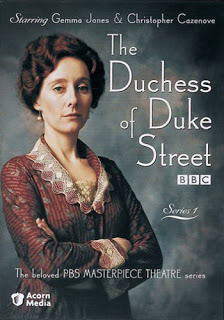
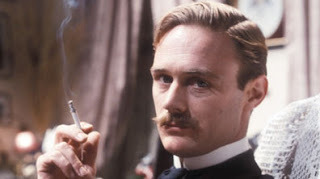 The Duchess of Duke Street is yet another gem from Masterpiece Theatre, in which Louisa Trotter works her way up from being a skivvy to being the Queen of cooks, cook to the King, and owner of the Bentinck Hotel. Based on the true story of Rosa Lewis, one of England's first recognized female chefs, who worked her way up through the culinary ranks in order to own the Cavendish Hotel and to rub shoulders with celebrities and royalty along the way. Her no nonsense take on life and what it throws at you is at the core of this lavishly produced series that is chock full of humor and heart. Created by John Hawkesworth (Upstairs, Downstairs) and starring Gemma Jones (Bridget Jones's Diary, Sense and Sensibility) as Louisa and Christopher Cazenove, above (A Knight's Tale, TV's Dynasty) as Charlie, the dashing love of her life. Spread out over two series, there are thirty-one episodes for viewers to relish.
The Duchess of Duke Street is yet another gem from Masterpiece Theatre, in which Louisa Trotter works her way up from being a skivvy to being the Queen of cooks, cook to the King, and owner of the Bentinck Hotel. Based on the true story of Rosa Lewis, one of England's first recognized female chefs, who worked her way up through the culinary ranks in order to own the Cavendish Hotel and to rub shoulders with celebrities and royalty along the way. Her no nonsense take on life and what it throws at you is at the core of this lavishly produced series that is chock full of humor and heart. Created by John Hawkesworth (Upstairs, Downstairs) and starring Gemma Jones (Bridget Jones's Diary, Sense and Sensibility) as Louisa and Christopher Cazenove, above (A Knight's Tale, TV's Dynasty) as Charlie, the dashing love of her life. Spread out over two series, there are thirty-one episodes for viewers to relish. The series more than loosely follows Rosa's life story.
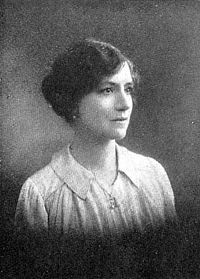 Hired to work in the kitchens of the Comte de Paris, Rosa learned to cook at the elbow of the Comte's French chef, copying his techniques and watching his every move as she rose through the ranks to become head kitchen maid. In 1887 Rosa was poached by the Duc d'Orleans as his cook. He hired her out on nights when her skills weren't needed at his home, allowing Rosa the opportunity to see grander and grander kitchens and to learn from better and more experienced chefs along the way. In time, Rosa became the first female cook to be employed at White's Club, where a member made a pass at her. Rosa dubbed him "an amorous old woodcock in tights" and was dismissed shortly thereafter. But never fear, things only looked up for Rosa from then on.
Hired to work in the kitchens of the Comte de Paris, Rosa learned to cook at the elbow of the Comte's French chef, copying his techniques and watching his every move as she rose through the ranks to become head kitchen maid. In 1887 Rosa was poached by the Duc d'Orleans as his cook. He hired her out on nights when her skills weren't needed at his home, allowing Rosa the opportunity to see grander and grander kitchens and to learn from better and more experienced chefs along the way. In time, Rosa became the first female cook to be employed at White's Club, where a member made a pass at her. Rosa dubbed him "an amorous old woodcock in tights" and was dismissed shortly thereafter. But never fear, things only looked up for Rosa from then on. There are several versions describing how the real life Rosa met Edward VII. According to Time Magazine, it was Lady Churchill who introduced them. However, the Cavendish Hotel biography states they first met while she was employed by Philippe, Comte de Paris and that Edward VII complimented her for the excellence of the dinner. Whatever the circumstances, Rosa and Edward formed a friendship that would last for years. Rumours of an affair between the two began to circulate and, in 1893 Rosa married a butler by the name of Excelsior Lewis (nicknamed Chiney, probably on account of his outlandish christian name). It was an arranged marriage, clearly intended to end the rumours and along with it came a stylish house in Easton Terrace. Rosa would later explain: "Me family said that if I didn't marry Mr Lewis they'd shoot me. I told the parson to be quick and get it over and done with. We were married, I threw the ring at him outside the church door and left him flat." Though the couple remained married, they only continuted to live together for a year. The Prince of Wales was understandably grateful that Rosa had made such a sacrifice on his behalf and it is widely believed that it was Edward, as King, who purchased the Cavendish Hotel in Jermyn Street for Rosa in 1902.
Whilst their romance might have cooled by that late date, Rosa and the King remained friends and Rosa had a private entrance installed for Edward and his royal guests so that nobody would notice their late-night parties in the grand drawing rooms of her hotel. Another admirer of her culinary skills was Kaiser Wilhelm II, who presented her with his portrait, which Rosa deigned to hang in the downstairs public loo.
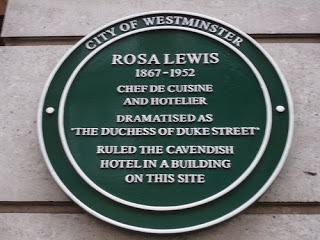
Rosa is played to perfection in The Duchess of Duke Street by actress Gemma Jones, who was first recognised outside the UK in 1974, after playing the Empress Frederick in the BBC television drama series Fall of Eagles. Gemma went on to play Mrs. Dashwood alongside Kate Winslet, Alan Rickman and Emma Thompson in the Academy Award-winning period drama Sense and Sensibility (1995).
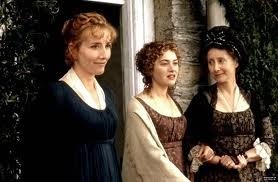
To read more about the real Rosa Lewis . . . .
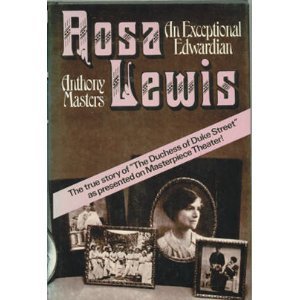
You can watch a bit of The Duchess of Duke Street here
Published on March 03, 2011 01:55
Kristine Hughes's Blog
- Kristine Hughes's profile
- 6 followers
Kristine Hughes isn't a Goodreads Author
(yet),
but they
do have a blog,
so here are some recent posts imported from
their feed.



